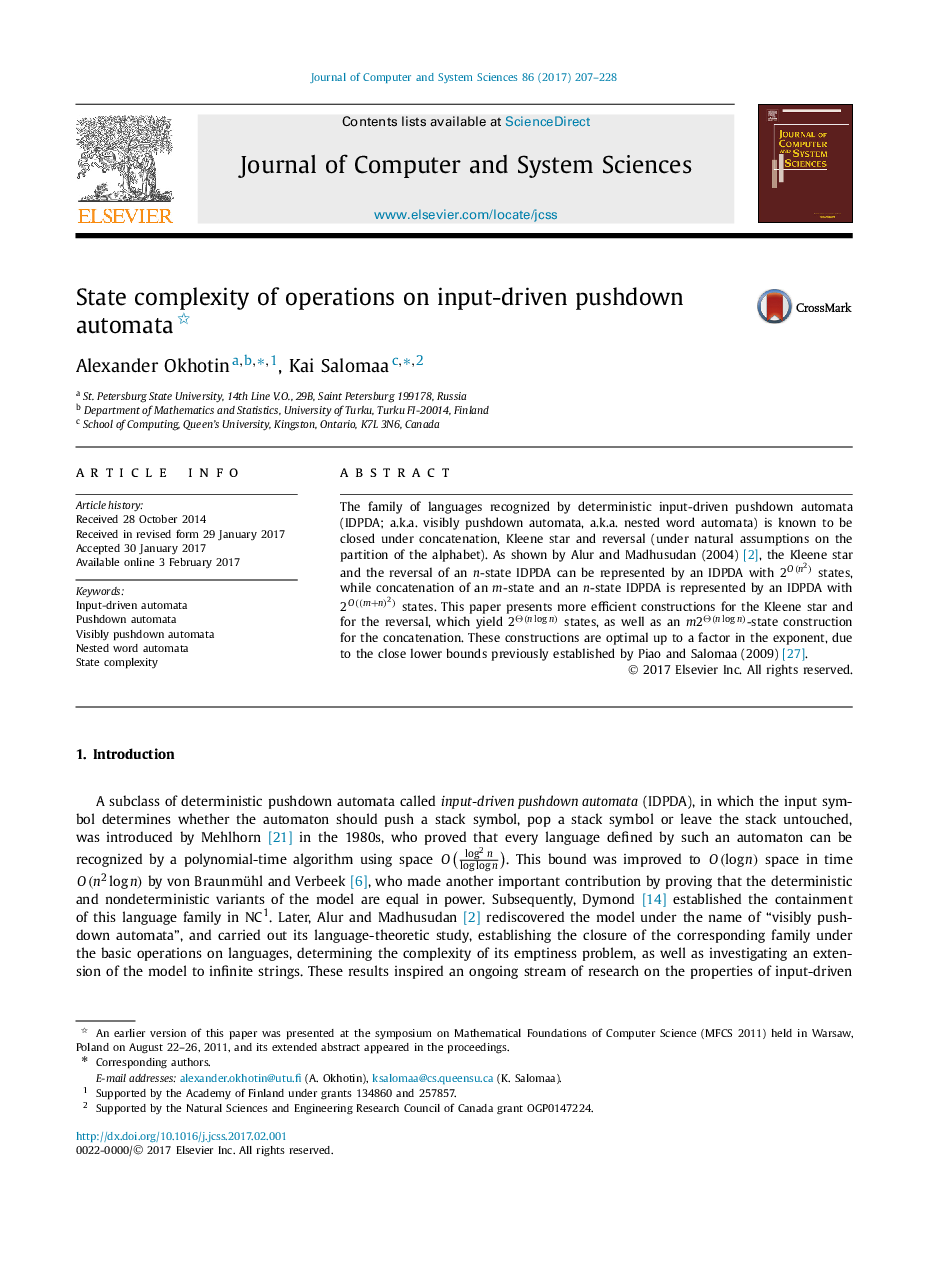| Article ID | Journal | Published Year | Pages | File Type |
|---|---|---|---|---|
| 4951185 | Journal of Computer and System Sciences | 2017 | 22 Pages |
Abstract
The family of languages recognized by deterministic input-driven pushdown automata (IDPDA; a.k.a. visibly pushdown automata, a.k.a. nested word automata) is known to be closed under concatenation, Kleene star and reversal (under natural assumptions on the partition of the alphabet). As shown by Alur and Madhusudan (2004) [2], the Kleene star and the reversal of an n-state IDPDA can be represented by an IDPDA with 2O(n2) states, while concatenation of an m-state and an n-state IDPDA is represented by an IDPDA with 2O((m+n)2) states. This paper presents more efficient constructions for the Kleene star and for the reversal, which yield 2Î(nlogâ¡n) states, as well as an m2Î(nlogâ¡n)-state construction for the concatenation. These constructions are optimal up to a factor in the exponent, due to the close lower bounds previously established by Piao and Salomaa (2009) [27].
Related Topics
Physical Sciences and Engineering
Computer Science
Computational Theory and Mathematics
Authors
Alexander Okhotin, Kai Salomaa,
